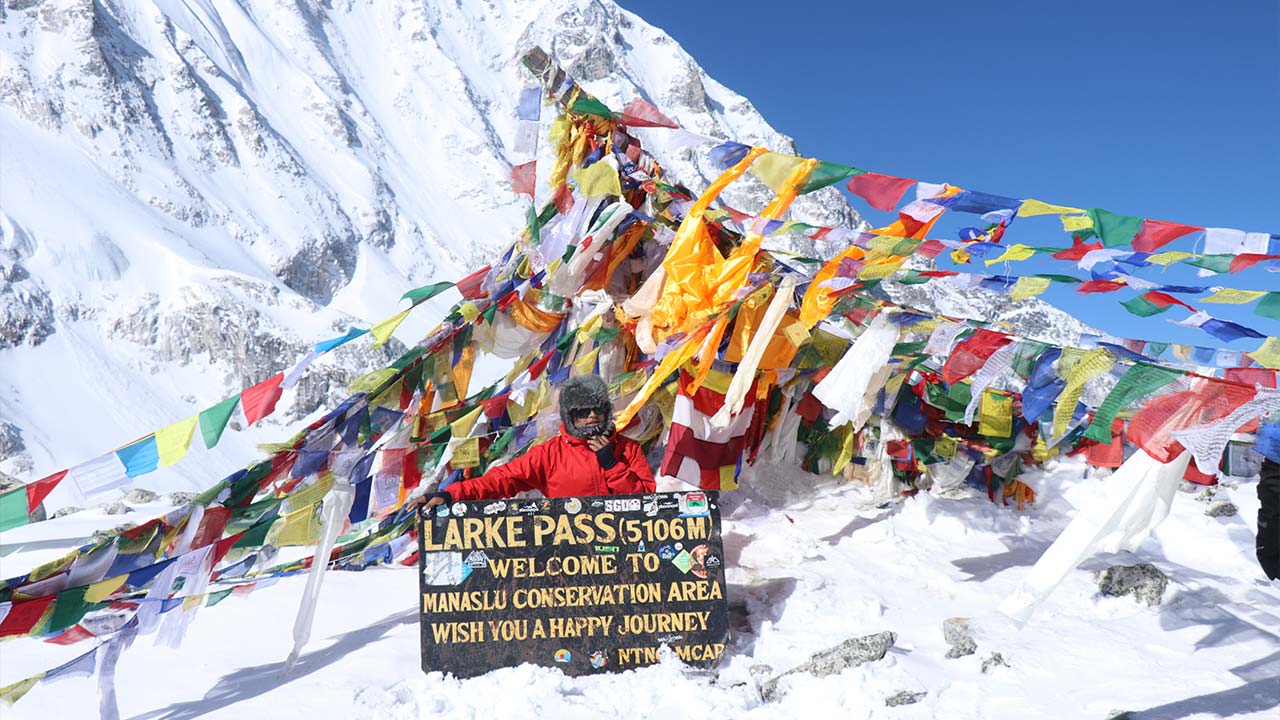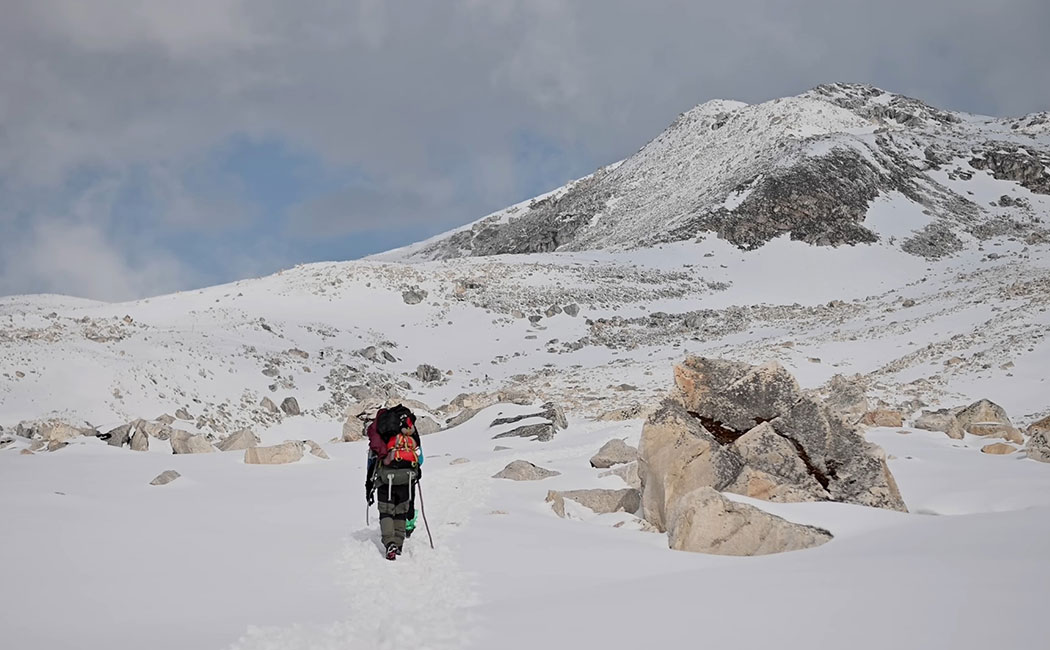
Manaslu Larke Pass Trek is one of Nepal’s most acclaimed mountain treks. It’s the most exquisite and finest of all hikes, with jaw-dropping views that’ll blow your mind away. Hiking Manaslu Larke Pass is an unusual and profound experience where one can bond with nature.
The trek is adventurous in its own right and has the travelers in awe of its beauty throughout the journey. Manaslu’s moderate walking trails invite trekkers of all levels to walk them. It takes them through a part of the midwest Himalayas, where travelers will discover beautiful landscapes,
They’ll also encounter many long-lived Nepalese villages and towns with different indigenous and ethnic groups. The trek also gives them an unreal and majestic view of Manaslu, the world’s eighth-highest mountain.
The Japanese expedition first summited the peak after great efforts and challenges. Fortunately, you don’t have to ascend the mountain for the Manaslu Larke Pass Trek trekkers. A multi-day walk through the remote areas, glacial moraine, and scenic valleys are enough to reach the highest point, Larke Pass, and enjoy the magnificent views.
Manaslu Larke Pass Trek involves difficult walks comprising steep slopes, mountainous terrains, and sharp ridges. Some of its trails are easy to follow, but most of the sections at higher elevations are quite challenging to hike. Trekkers must follow the trail upstream of Budhi Gandaki River and through the alpine forests.
On multiple events, we’ll pass several villages and cross the suspension bridge during the trek. After traveling Larke Pass, the trail goes down through the subtropical forests before following the main trail of Annapurna Circuit at Dharapani village.
On the last day of the Nepal Manaslu trek, we’ll descend to Chamje Village and then take a scenic drive to Kathmandu. The journey offers us a panoramic view of Annapurna massif, Manaslu, and Macchapuchre. Finally, we’ll complete the Manaslu Larke Pass Trek at Eco Holidays Nepal with a short drive from the airport to the hotel.
You might be interested in: Manalsu circuit trek, Or Manaslu with Tsum Valley trek Or Manaslu Base Camp Trek
 Highlights of Manaslu Larke Pass Trek
Highlights of Manaslu Larke Pass Trek
- A scenic road trip to Soti Khola
- Epic trails with scenic views of surrounding green hills
- Incredible shots of Manaslu, Cho Danda, and Larkya Peak
- Unique culture, traditions, and values of native Himalayan
- Longest pass of the trek, Larkya La
- Rich biodiversity with subtropical wilderness
Other Manaslu guide articles: Hiring a Manaslu Circuit Trek guide | Required permits | Packing for Manaslu trek
When is the best time to visit Manaslu Larke Pass Trek?
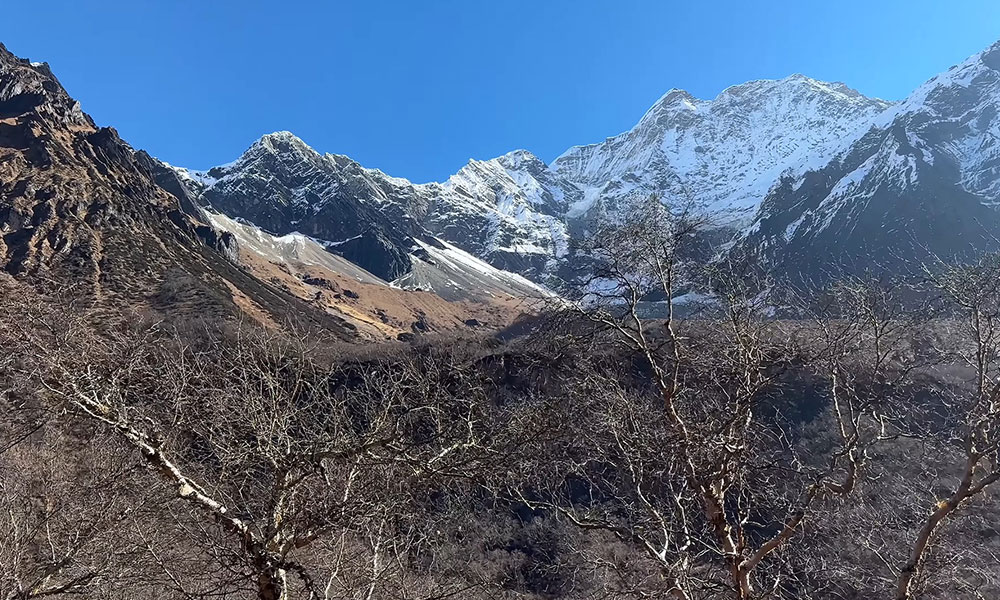
Manaslu in Spring is magical, but most travelers find Autumn a perfect time to visit. You’ll experience the warmest weather, with temperatures rising to 15 Degrees Celsius during this time.
October starts Manaslu’s shoulder season when the weather begins to cool down. Temperatures fall gradually after the month and only worsen as winter approaches. Morning and nights are generally cold in Fall, but the days are still warm, dry, and sunny.
It has clearer skies with beautiful days, making it easy to watch the surrounding mountains and hills. You’ll also enjoy the colorful fall foliage in different parts of the region in Autumn, which looks incredible.
Spring, being the second busiest time, has travelers flocking from all around the world. Its pleasant weather with unobstructed views draws most people’s attention. The season delights its visitors with warm, sunny weather that never fades out.
Manaslu barely sees rain in Spring, making travel easier and more convenient. It brings warm weather with it, although the early season feels chilly. The season experiences its warmest days in May when the temperature increases to 18 degrees Celsius.
Its crisp and clear days will give us a lovely view of lush green farms and tropical forests. Spring is nice to see full-bloom rhododendron in the forest and valley. You’re likely to encounter varied wild animals and birds in the woods as they come to enjoy the fine weather and sunshine.
Visitors to Manaslu will find early spring a bit cold and freezy due to winter. The temperature of Manaslu starts from the start of April and continues to rise till the end of May. The temperature at Manaslu remains low even at the season's peak, although it increases down in the valley. The Manaslu Larke Pass Trekking itinerary offers trekkers stunning Himalayan views, alpine landscapes, and traditional Tibetan-influenced villages along the route.
 Itinerary:
Itinerary:
Day 01: Kathmandu to Soti Khola
Soti Khola Altitude: 730 meters
Drive Hours: 6-8 hrs
Overnight: a Hotel
We’ll start our first day of the Manaslu Larke Pass Trek by commuting from Kathmandu to the west-central village of Soti Khola. As the shortest distance traveled between these two towns is 99.4 miles on Prithvi Highway, we’ll leave early in the morning.
The highway makes its way to Soti, following the Trishuli River and passing several villages, including Arughat. After driving more than halfway, the wagon leaves the broad lane and takes a dirt path.
We see rare glimpses of Manaslu, Annapurna, and Ganesh Himal as it moves forward. The trip finishes after almost 8 hours of riding on a jeep with a scenic view of lush hillsides and green terraces. Overnight stay in a hotel.
Day 02: Trek from Soti Khola to Machha Khola
Machha Khola Altitude: 890 meters
Walking Hours: 6-7 hrs
Overnight at: a Hotel
We’ll leave the village early in the morning and embark on the next epic journey to Machha Khola. The trek out of Soti begins with crossing the bridge and traveling through a forest, which provides a great view. Before long, the trail surmounts the ridge above the Budhi Gandaki River.
The path will take us to the beautiful village of Khursane and to Lububesi, a Gurung settlement. From here, we’ll make a further ascent on a rocky trail and open valley before it drops to the riverfront. After a long ascent up the steep slopes, we’ll finally get to Machha Khola.
Day 03: Trek from Machha Khola to Jagat

Jagat Altitude: 1,410 meters
Walking Hours: 6-7 hrs
Overnight at: a Lodge
After breakfast, we’ll continue the trek by following a narrow trail with several ups and downs, just after crossing Tharo Khola, the trail heads to Khorlabesi, where we must deal with the rugged terrains. After a few more switchbacks, we’ll reach the hot spring in Tatopani, one of the impressive places to stop.
The trail goes up from here and crosses the suspension bridge over the Budhi Gandaki River. It ascends steep stairs heading over a cliff to Dhobhan and crossing another suspension bridge. After a final push to Jagat, climbing steep stairs up to Tharo Bharyang, we’ll finally arrive at the village. Overnight stay in a teahouse.
Day 04: Trek from Jagat to Deng
Deng Altitude: 1,804 meters
Walking Hours: 6-7 hrs
Overnight at: a Lodge
Today we rise with the Manaslu sun yet again and have breakfast before leaving for Deng. The trek starts with an easy walk through subtropical forests and a wooded village with small streams. We’ll then mount a rocky cliff to Salleri and then plummet to Sardibas, wherefrom the valley widens.
The trail will take you to the Ghatta Khola River before it runs upstream to the suspension bridge in Phillim. From here, the path winds north, coming across a millet field to Ekle Bhatti and a desolated gorge. Soon, we’ll descend the trail to grassy slopes and cross the suspension bridge before walking along the west bank.
After traveling a wide valley and passing through the bamboo forests to Deng Khola River, we’ll reach Deng. Once we’re at the village, get ready to watch the beautiful valleys and lush green forests. We’ll stay overnight in a lodge.
Day 05: Trek from Deng to Namrung
Namrung Altitude: 2,630 meters
Walking Hours: 6-7 hrs
Overnight: Namrung
After breakfast, we’ll prepare for our next trip to Namrung, one of the most significant treks, natural and cultural-wise. It begins with crossing the Budhi Gandaki River and ascending the ridge to and above Bhi. Traveling west up the valley and into the dense forests with alpine meadows, we’ll reach an old village inhabited by racial communities.
We’ll follow the trail through Pork and to the Budhi Gandaki before heading to the upstream river. Soon after, it brings us to the lush green and a narrow gorge. After traveling the forested areas for quite some time, we’ll reach the village of Namrung.
We’ll cross the suspension bridge several times daily and pass some old gompas that unfold local culture and beliefs. The trek also involves sightseeing from Prok’s viewpoint and discovering a small part of the Manaslu Conservation area. Overnight stay in a lodge.
Day 06: Trek from Namrung to Samagaon
Samagaon Altitude: 3,530 meters
Walking Hours: 6-7 hrs
Overnight: a Teahouse
The day starts with a hearty breakfast, filling us up for a full-day trek. We’ll start the trip immediately and travel around the villages for a few minutes. Next, we’ll ascend the steep hills and pass through the forest until we get to the beautiful Lihi Village. You can see a lot of ancient Tibetan stupas and terraces on this section of the trail.
The path takes a huge drop right before and crosses the valley side of Simnang and Ganesh Himal. It doesn’t end up here, continuing to press for the Lho, a culturally-rich village with many stupas, chortens, and mani walls.
On the way, we’ll pass some other Nepalese villages, including Sho and Shyala. After enjoying the wonderful view of Manaslu and Lho, we’ll cross a small stream that seeps the Pungyen glacier and finally arrive at Samagaon.
The village is a gateway to Manaslu at an elevation of 11,581 ft. It also makes a perfect vantage point to watch the surrounding mountains and glaciers. We’ll spend the night in a teahouse at Samagaon.
Day 07: Rest day and Exploration
Today we won’t walk the trekking route but rather get well-deserved rest. After enjoying a warm breakfast, we’ll explore the village and hike up to the Pungyen monastery near the Tibetan border.
Viewed as a cultural landmark, Pungyen has a lot of ancient monasteries, stupas, and mani walls. During the visit to the monastery, you can see it adorned with colorful prayer flags, which look impressive. Other side trips in Samagaon accessible for acclimatization include Manaslu Base Camp and Birendra Lake.
Day 09: Trek from Samagaun to Samdo

Samdo Altitude: 3,875 meters
Walking Hours: 3-4 hrs
Overnight: Hotel
Unlike the day before, we’ll kick off the trek with a gentle descent to Budhi Gandaki River and over a tributary from the north. The trail on the left will lead us to the Manaslu Base Camp, which offers the closest view of Shringi Himal, Ganesh Himal, and Manaslu.
Following the trail, we pass several mani walls until the valley widens, making the trek easy. The path laying aside above the river is easy and comes with a scenic view of Juniper and Birch forests. After Kemo Khark, the trail drops off the shelf and crosses the wooden bridge over Budhi Gandaki.
Suddenly, the trail from here rises steeply across the river, providing an incredible view. Finally, after walking through the village of Kani, we’ll end up at Samdo. Overnight stay in a hotel.
Day 10: Trek from Samdo to Dharamsala
Dharamsala Altitude: 4,460 meters
Walking Hours: 4-5 hrs
Overnight at: a Teahouse
As always, we’ll start the day with a warm breakfast and then continue the journey to Samdo. Walking out of the village, we begin our voyage down the edge and onto the wooden bridge over Dudh Koshi. After climbing a steep hill, we’ll cross the two streams, which open the view of Larkye Glacier.
After walking around the valley of Salka Khola, we ascend the trail until it stops at Dharamsala. As this village has been a common stop for trekkers of Manaslu with many lodges and teahouses, we’ll spend the night here.
Day 11: Trek from Dharamsala to Bimthang via Larkye La Pass
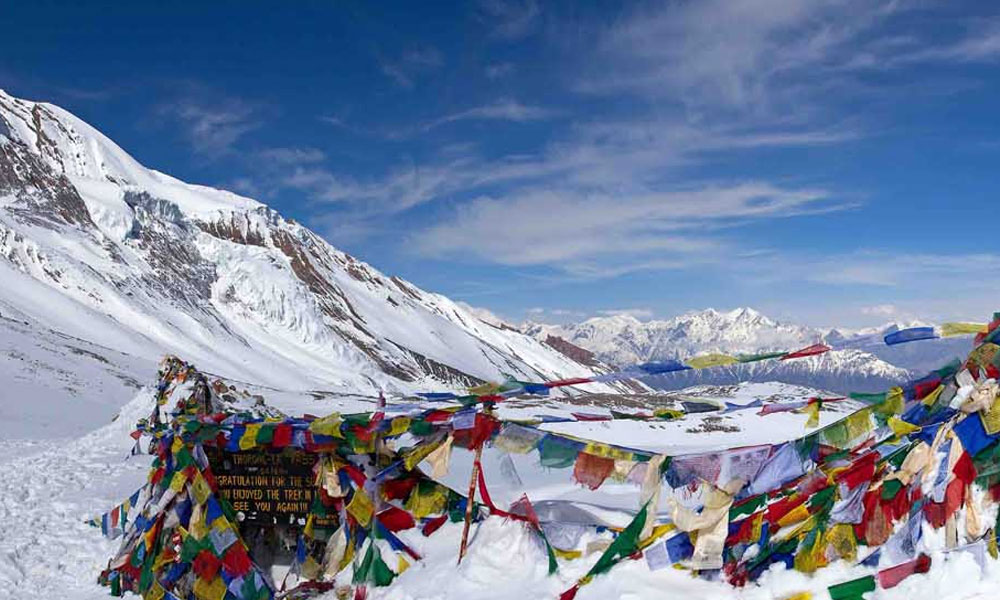
Bimthang Altitude: 3,720 meters
Larkye La Pass Altitude: 5,160 meters
Walking Hours: 8-9 hrs
Overnight: Bimthang Teahouse
Today’s hike counts more than any other. So, we’ll start trekking and climbing the steep trail without wasting time. After a short ascent, we’ll finish up at the valley north of Larkye La Glacier. The trail will then take us to the glacial moraine and up the hill, from where the path becomes steeper.
We’ll get a clear view of Himlung Himal, Kangguu, and Annapurna II. After climbing the last section of the pass, the trail will lead the way to Bimthang. It comes across a low pasture with a mesmerizing view of the surrounding mountains and rugged hills. Overnight in Bimthang.
Day 12: Trek from Bimthang to Tilije
Tilije Altitude: 2,300 meters
Walking Hours: 5-6 hrs
Overnight: a Teahouse.
After breakfast, we’ll reach the trail, descending the hills and crossing a high pasture called Sangure Kharka. Walking on the bridge over Dudh Koshi Khola, the trail runs through a rhododendron forest and then follows a narrow valley until it reaches the farmland at Karche.
Traveling the lush field, we’ll soon return to the trail that climbs over a ridge. Soon it comes out of the ridge and long arcs to the riverbank. The trail will lead us to the village of Lho, which rewards us with a stunning view of towering mountains and rolling hills.
Since the trek to Tilije isn’t too far from Gho, we’ll go slow on the trail. After six hours of walking, we’ll finally be at Tilije, our last stop of the day. Overnight stay in a village.
Day 13: Trek from Tilije to Dharapani and drive to Besisahar
For the last expedition of the Manaslu Circuit Larke Pass Trek, the trail is rather easy and relaxing. It starts with a short ascent up the ridge and over a stone-paved trail that runs through a charming village. Sometime later, we’ll cross the Dudh Khola bridge, scale a chorten-shaped arch, and come through a mani wall to arrive at Thonje Village.
After getting through a police checkpoint, we’ll continue our trek to Dharapani. From here, we’ll be driven to Besisahar, taking around 6 to 7 hours. During the drive, we’ll see many beautiful villages, deep green forests, and waterfalls. Overnight at Besisahar
Day 14: Drive to Kathmandu
Since the jeep leaves for Kathmandu early in the morning, we’ll have breakfast on time. The drive is 6 hours long on a meandering trail along the banks of the Marsyangdhi and Trishulii Rivers. Driving by the beautiful villages and terrace farms, we’ll enter Kathmandu, a vibrant city with a huge crowd. From here, we’ll transfer you to the hotel so you can rest.
.jpg) Food and Accommodation
Food and Accommodation

Visitors will find a lot of accommodation options when traveling to Manaslu. They vary, ranging from budget hotels to moderately priced guest houses. Yet, the most common and popular accommodation in Manaslu is Teahouses, which are widely available and cost little despite the altitude and weather conditions.
These teahouses offer a standard service with spacious rooms and comfortable beds. They feature a pillow, blanket, bedsheet, and towel. You may find hot showers in some, but many don’t offer the facilities unless you agree to pay a few extra bucks.
Also, most of their rooms are shared with a single bed, but the teahouses can provide private rooms only if you’re willing to pay a higher price. They have lovely Nepalese food to offer guests, mostly consisting of dal-bhat, curried vegetables, lentil soup, and more.
You can stay in a teahouse and enjoy other cuisines, like vegetable soup, dumplings, stir-fried noodles, and more. If you want other food not mentioned in the list, you probably have to find other accommodations.
Apart from the teahouse, plenty of other guesthouses and hotels offer great service to visitors, but they can be a bit expensive. They can provide personalized service with other additional facilities that make your traveling easier and more convenient.
How difficult is Manaslu Larke Pass Trek?
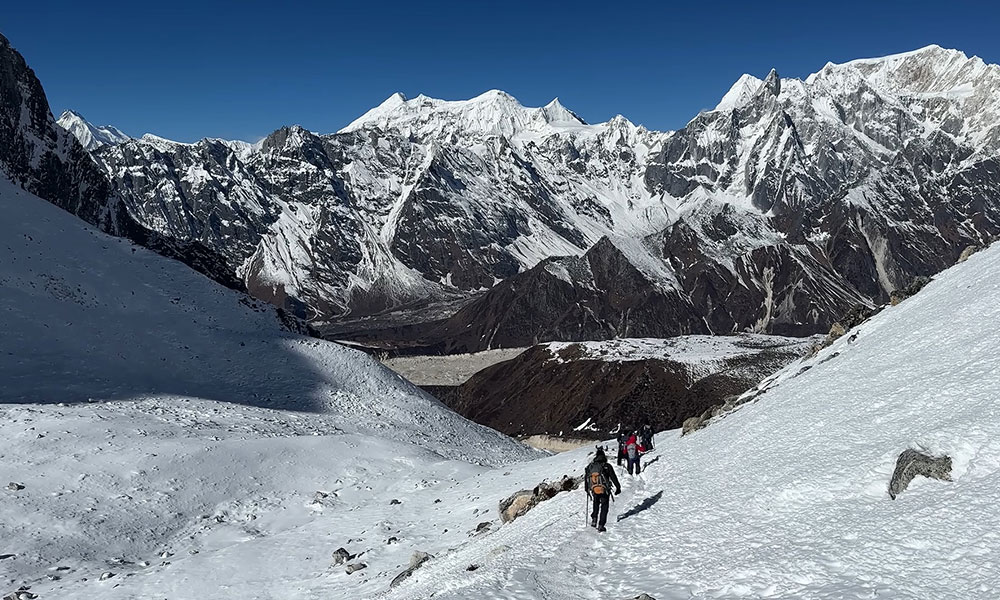
Manaslu Larke la Pass Trek is a moderate hike with fewer steep slopes and ridgelines. Its trails aren’t as difficult as in the mountains, with no technical ascents and crevasses. However, the parts of Manaslu can be tough, especially at the higher altitude where the weather is unforeseeable and oxygen is low.
Climbing the trails at these parts can cause trekkers altitude sickness and dehydration. Seasonal weather change is part of the Manaslu trek. Most trekkers climbing the Larke Pass in winter will find the weather extremely cold following heavy snowfall and windstorms.
Monsoon brings excessive rain to Manaslu, making the trail slippery and hard to climb. Trekking will take longer in the season due to weather fluctuations and temperature swings.
Hiking the Manaslu and Larke Pass may seem easy, but they are demanding. Its extensive trails with steep slopes and craggy hills with glacier moraines make the trek hard. Hikers may find the trek downhill deceptively easy, but don’t get fooled by it.
You must go slow and steady on the trail; otherwise, you’ll run out of energy. Physical strength is equally important while doing the Manaslu Larke Pass Trek. Therefore, you’ll have to spend enough time training and preparing for the hike.
Plan the trip ahead of schedule to prevent trek difficulties. Likewise, maintain the speed of your hike, especially while climbing Larke Pass. Keep yourself informed about the weather and climatic conditions. Don’t forget to bring the required trekking equipment, snacks, and other necessary supplies on the hike.

